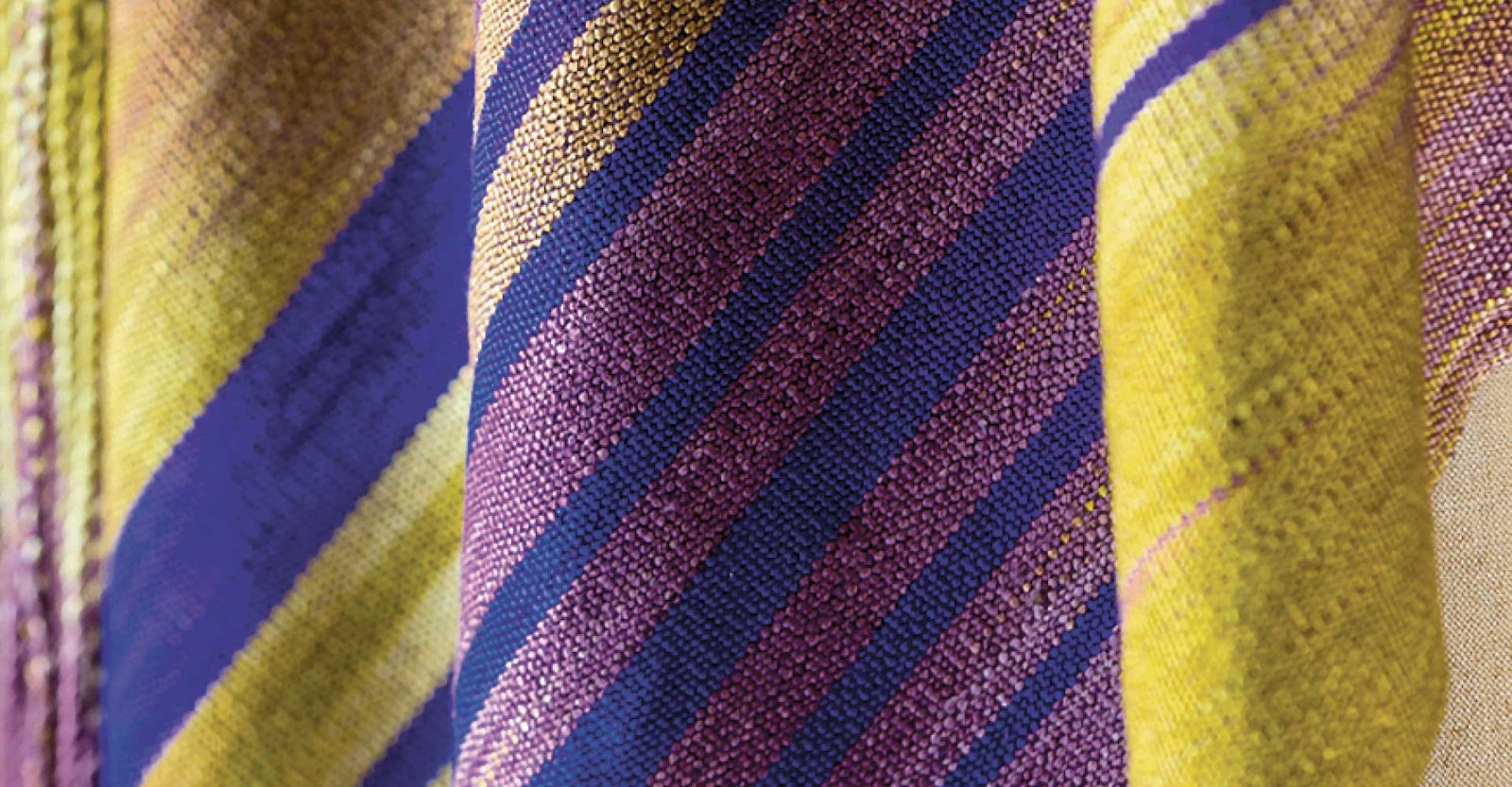Devin Helmen says, “I have always been a spinner, first and foremost—only afterwards a knitter and later a weaver.” Devin’s weaving journey has always been handspun focused. In the Summer 2019 issue of Spin Off, Devin asked three weavers about their own handspun, handwoven work. ~Kate
Sara Lamb is a textile teacher and mentor who has been fundamental to my success in weaving and spinning for weaving. She literally wrote the book about it.
“We have a subtle visual and tactile understanding of things we handle and use daily. We know a handmade cup the minute we pick it up, as opposed to a machine-made cup with its uniform surface and weight. We see the difference between handwritten calligraphy and machine-generated calligraphy at once. We know handmade jewelry, even as smooth and finished as it can be, from factory made.
“Weaving and spinning are among the earliest crafts that were mechanized in the Industrial Revolution. We have had mechanically spun yarn and mechanically woven fabric for over 200 years, and thus our mental picture of ‘what fabric looks like’ is far removed from truly handmade fabrics. Most people pay little attention to the cloth we use daily, much less distinguish machine-made cloth from handmade; they have to be told when something is handwoven. Further, cloth made of handspun yarn is far removed from common understanding or expectations even among handweavers—people who know handmade cloth! It is so subtle a variation from handwoven cloth of machine-made yarn that we have no words for the difference.
“Linguists tell us that the words we use define the world we see, just as cultural norms are embedded in our language. How many words are there for snow? Depends on which culture you ask. How many words for rain? It depends. Cloth is just as ubiquitous to our daily lives as rain and snow, and yet we have no words for the subtlety of handspun cloth, differentiated from handwoven cloth from commercial yarns, or even from commercial cloth.
“Very little in the natural world is perfectly symmetric, perfectly smooth, or perfectly even. Our eyes are accustomed to uneven and irregular surfaces, which are more intimate and comforting than the uniform and high-tech modern surfaces we are surrounded with in the public world.
“Handspun yarns create a surface that is not perfect, that has variable visual and reflective qualities because of its imperfections: light and shadow play differently on uneven surfaces, much more like light and shadow in nature. Hands that touch handspun cloth can feel that subtle variation, just as eyes can see it.
“Handspun, handwoven cloth shows the hand of the maker, over the perfect repetition of the machine. Our eyes smooth over small imperfections, and our hands feel the slight variations of yarn and fabric. It is human, it is natural, it is comforting.”

